 |
| Thurston Moore |
Review of Thurston Moore's Alabama Wildman
By Ian Thal
Thurston Moore, better known for his musical output, also writes poetry and prose that are at once both experimental and accessible. Review originally appeared in the 11/20/2001 edition of Ibbetson Street Press Update, a free email newsletter covering small press literature.By Ian Thal
alabama wildman, Thurston Moore (111 pages, hardcover. Water Row Press, P.O. Box 438, Sudbury, MA 01776, 2000) $18.95
Thurston Moore, best known for his work with the highly influential and innovative “no-wave” band Sonic Youth, demonstrates the same free ranging experimentalism with words that has defined his songwriting and guitar playing over the course of his musical career.
While much of his writing is concerned with the details of everyday life in bohemia common to predecessors amongst the Beats and the New York School, Moore’s everyday life includes being a iconoclastic figure in an important avant-garde movement that bridged the gap between the youth counter-culture of punk rock and compositional uses of noise, prepared instruments, chaos, and collage.
His unpretentious willingness to play with the sounds of words, typography, and form is constantly entertaining and provides a new experience on every page. Just as music and noise are integrally joined when Moore straps on a guitar or enters the recording studio, his poetry includes its own noise within. A good example is in the poem, “boredoms” which should accurately represent the Osaka, Japan-based ensemble of the same name to anyone who has attended their concerts or heard their recordings:
boredoms are
no-self WORLD sex-free (lanterns) ON
!??!bBOBOBOOBOBOBBBO øø ø ø ø ø øøøøøøøøøØiØØØiØ
tronix to the phew-ture...--
there is no stop sign when intuition is creative JUICE
HARP::::goddblesss:::
smoder(obo)redoms19998
Thurston Moore’s world simply demands more freedom than most writers allow themselves.
Moore’s background as a musician is also reflected in his sense of meter and rhyme as in his portrait of bassist Mike Watt in “free city rhythm”:
Pushing his broom into zoom
Watt comes to terms w/his room
talking-- to plato “the punk”
two fingers to his chest
(+ THE WHO knows to
rest?)
Even when using more conventional forms, Moore’s writing comes across as fresh. In his poem “contents,” which at first sight looks like a table of contents until one realizes that the lines are not titles of the poems but rather a Burroughsian “cut-up” or collage of phrases found on the pieces that follow. One is forced to wonder if the “about the author:” in the back, the “by thurston moore:” in the front, and even the “index” and appendices are also poems.
The prose and interviews that round out the book give a more literal glimpse into the music scene: the author is interviewed for ‘zines, he meets his musical heroes, he describes himself as nineteen year old guitarist in New York during the late seventies. Here we get a glimpse not of Moore, but of Thurston, a music fan who has not quite overcome the thrill that his idols, Patti Smith, Lydia Lunch, Richard Hell, and Lenny Kaye have become his friends.
A particularly engaging prose piece is “in the mind of the bourgeois reader” in which Moore narrates a sexual encounter with a younger musician and fan named Jackie. While the sex and the use of drugs are explicit, there is nothing pornographic or exploitative; instead there is a sweet amazement at the simple joys that can come from a brief encounter. Thurston is not being heroically transgressive, he is vulnerable, and afraid of falling deeply in love with someone he barely knows. This wide-eyed innocence also appears in a number of his poems such as “punks, flagrant”:
“my name is bug” she says wet
in the eyes, fucked, foamed
“clear as mud”
he feels to hisself
(awash’d post-cum soft
‘pon hot basket tum)
Thurston Moore’s writing, like his music, is both experimental and accessible, making him something of a kindred spirit with e.e. cummings (especially the cummings who does not appear in middle school and high school textbooks.) At the same time it is also an important resource for anyone interested in the early New York punk rock and no-wave music scenes.
Ian Thal
Jamaica Plain, MA
Thurston Moore, best known for his work with the highly influential and innovative “no-wave” band Sonic Youth, demonstrates the same free ranging experimentalism with words that has defined his songwriting and guitar playing over the course of his musical career.
While much of his writing is concerned with the details of everyday life in bohemia common to predecessors amongst the Beats and the New York School, Moore’s everyday life includes being a iconoclastic figure in an important avant-garde movement that bridged the gap between the youth counter-culture of punk rock and compositional uses of noise, prepared instruments, chaos, and collage.
His unpretentious willingness to play with the sounds of words, typography, and form is constantly entertaining and provides a new experience on every page. Just as music and noise are integrally joined when Moore straps on a guitar or enters the recording studio, his poetry includes its own noise within. A good example is in the poem, “boredoms” which should accurately represent the Osaka, Japan-based ensemble of the same name to anyone who has attended their concerts or heard their recordings:
boredoms are
no-self WORLD sex-free (lanterns) ON
!??!bBOBOBOOBOBOBBBO øø ø ø ø ø øøøøøøøøøØiØØØiØ
tronix to the phew-ture...--
there is no stop sign when intuition is creative JUICE
HARP::::goddblesss:::
smoder(obo)redoms19998
Thurston Moore’s world simply demands more freedom than most writers allow themselves.
Moore’s background as a musician is also reflected in his sense of meter and rhyme as in his portrait of bassist Mike Watt in “free city rhythm”:
Pushing his broom into zoom
Watt comes to terms w/his room
talking-- to plato “the punk”
two fingers to his chest
(+ THE WHO knows to
rest?)
Even when using more conventional forms, Moore’s writing comes across as fresh. In his poem “contents,” which at first sight looks like a table of contents until one realizes that the lines are not titles of the poems but rather a Burroughsian “cut-up” or collage of phrases found on the pieces that follow. One is forced to wonder if the “about the author:” in the back, the “by thurston moore:” in the front, and even the “index” and appendices are also poems.
The prose and interviews that round out the book give a more literal glimpse into the music scene: the author is interviewed for ‘zines, he meets his musical heroes, he describes himself as nineteen year old guitarist in New York during the late seventies. Here we get a glimpse not of Moore, but of Thurston, a music fan who has not quite overcome the thrill that his idols, Patti Smith, Lydia Lunch, Richard Hell, and Lenny Kaye have become his friends.
A particularly engaging prose piece is “in the mind of the bourgeois reader” in which Moore narrates a sexual encounter with a younger musician and fan named Jackie. While the sex and the use of drugs are explicit, there is nothing pornographic or exploitative; instead there is a sweet amazement at the simple joys that can come from a brief encounter. Thurston is not being heroically transgressive, he is vulnerable, and afraid of falling deeply in love with someone he barely knows. This wide-eyed innocence also appears in a number of his poems such as “punks, flagrant”:
“my name is bug” she says wet
in the eyes, fucked, foamed
“clear as mud”
he feels to hisself
(awash’d post-cum soft
‘pon hot basket tum)
Thurston Moore’s writing, like his music, is both experimental and accessible, making him something of a kindred spirit with e.e. cummings (especially the cummings who does not appear in middle school and high school textbooks.) At the same time it is also an important resource for anyone interested in the early New York punk rock and no-wave music scenes.
Ian Thal
Jamaica Plain, MA


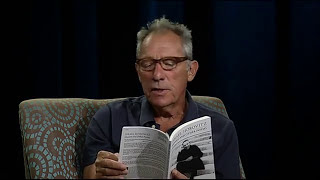
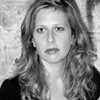






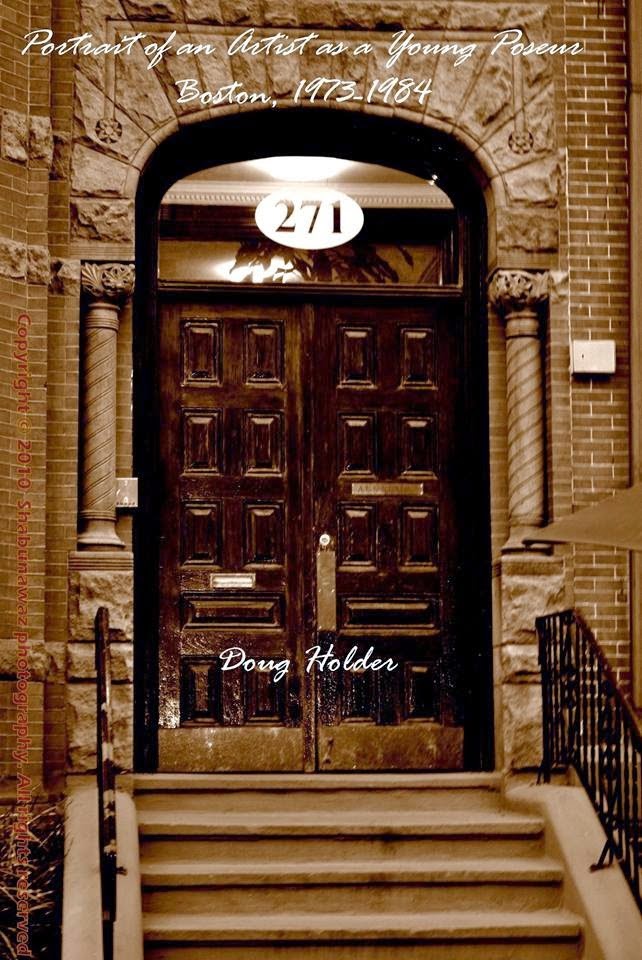

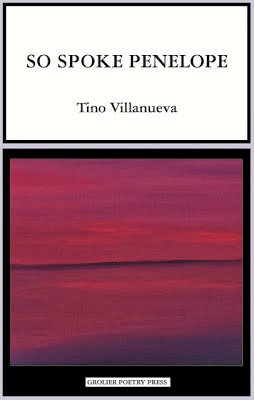
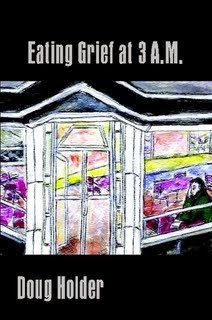
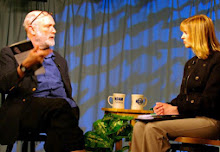








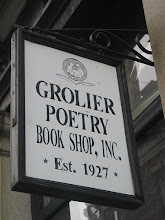



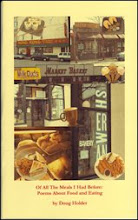




No comments:
Post a Comment